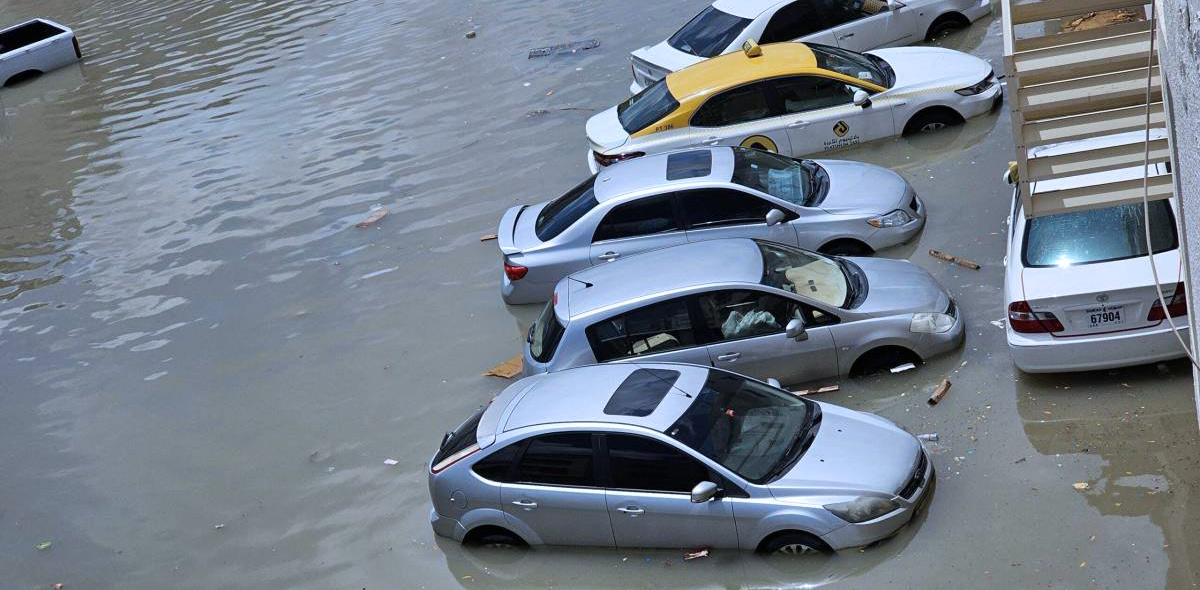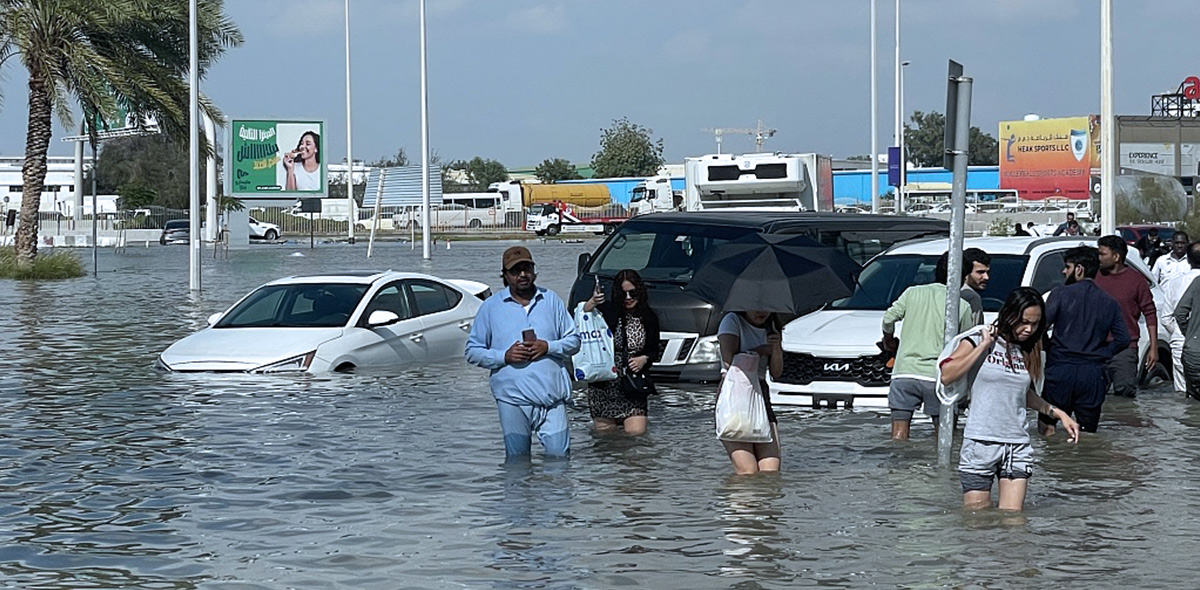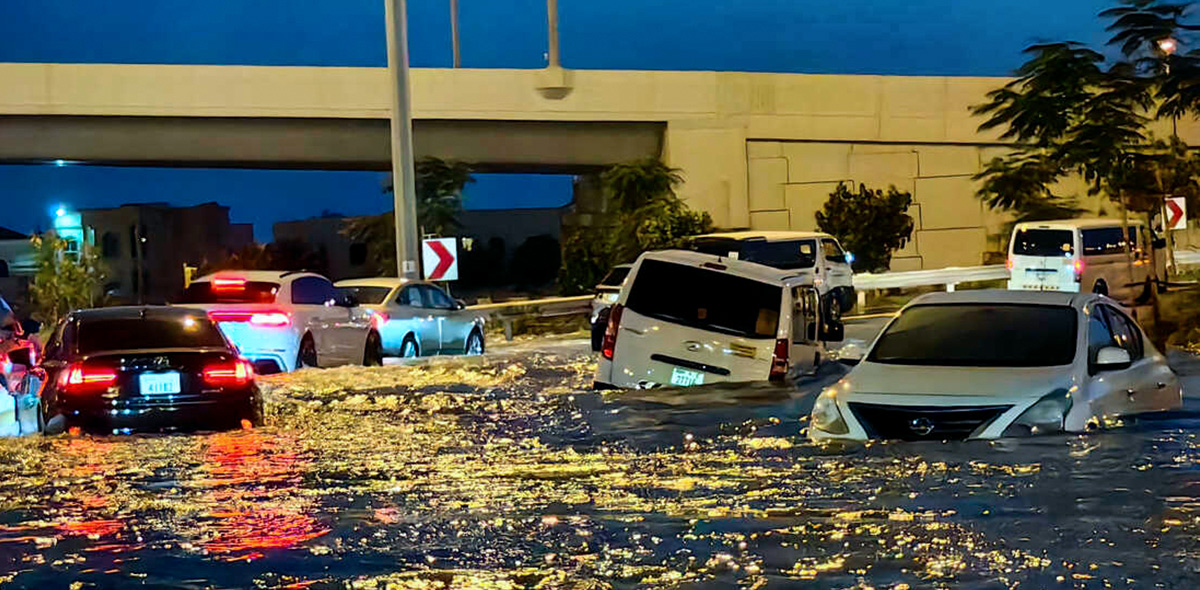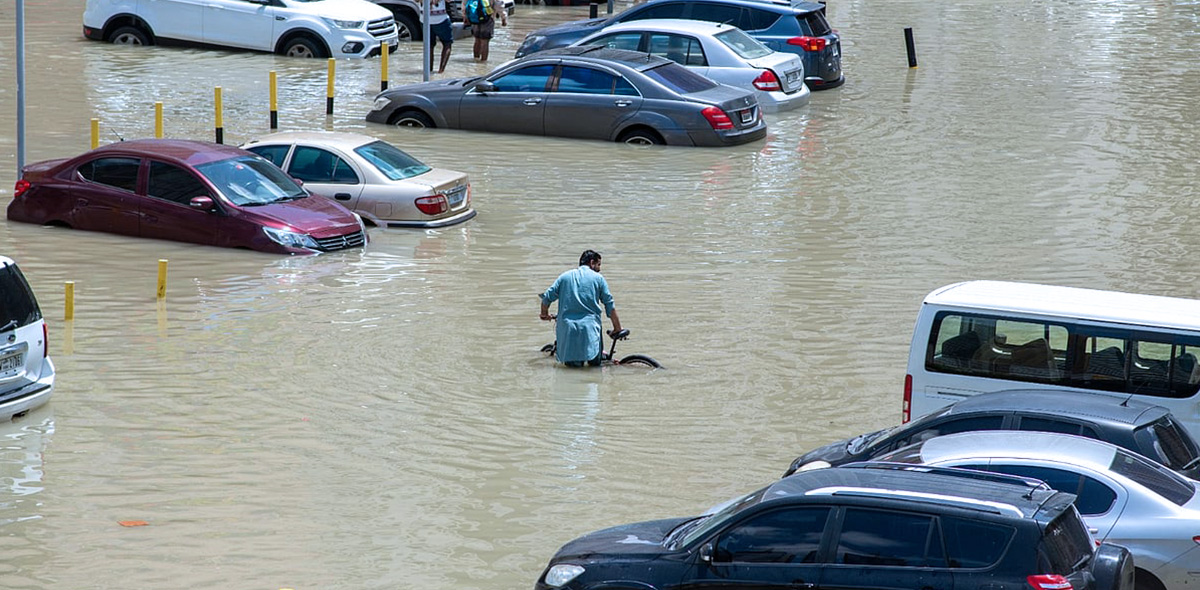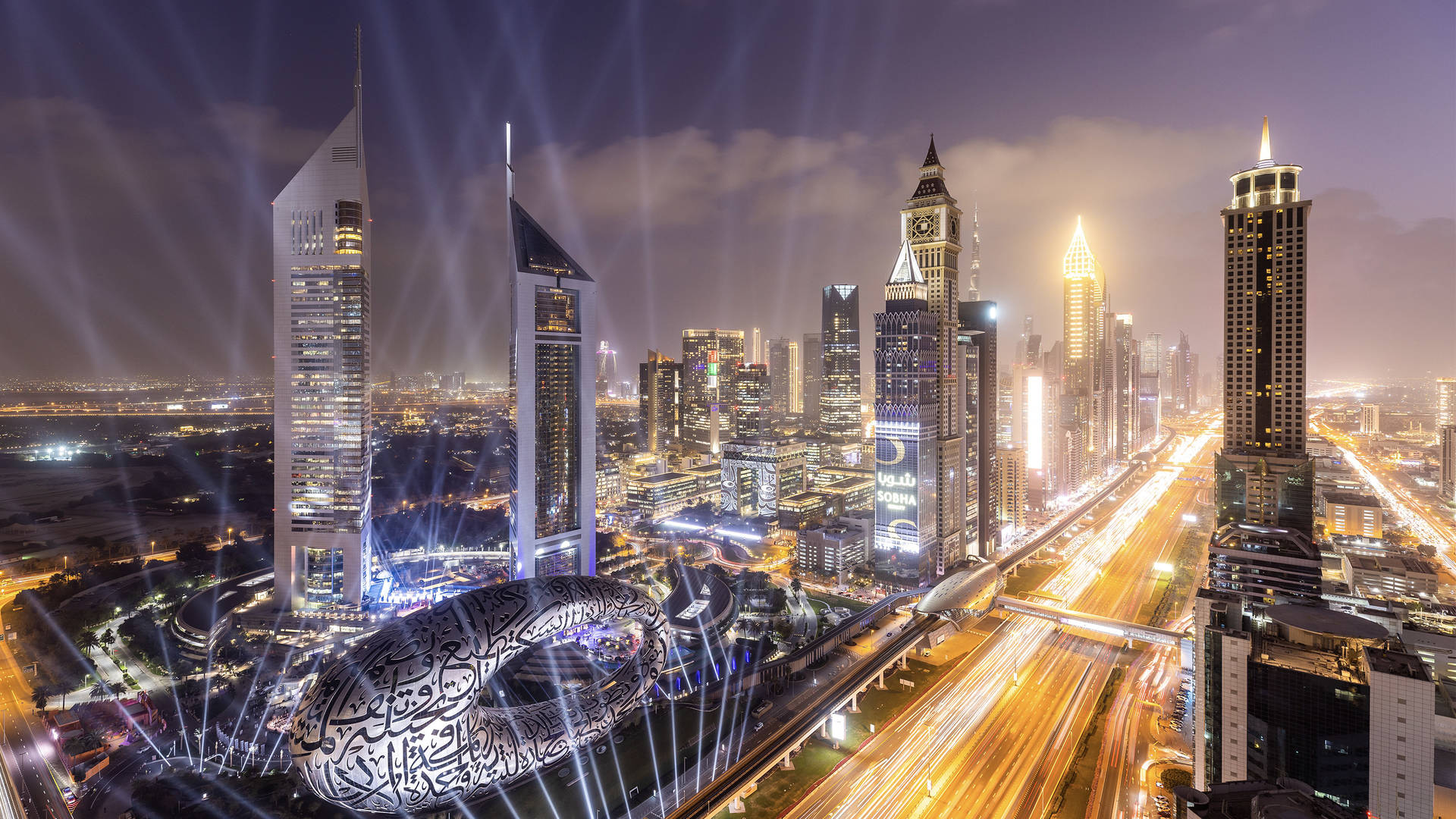One Year After UAE’s Historic Floods: Lessons and Resilience Across Cities
On April 16, 2024, the United Arab Emirates faced an unprecedented deluge, a storm that marked itself as the most severe in 75 years. Torrential rains, dumping up to 250 millimeters of water in a single day, inundated not only Dubai but also Abu Dhabi, Sharjah, and other emirates, transforming the UAE’s desert landscapes into scenes of submerged roads, stranded vehicles, and disrupted lives. One year later, as the nation commemorates the anniversary of these historic floods, the UAE reflects on the lessons learned and the steps taken to fortify its cities against an increasingly unpredictable climate.
The Day the Desert Drowned
The 2024 floods were a wake-up call for a nation synonymous with innovation and arid terrains. Dubai, the gleaming metropolis, saw highways turn into rivers, while Abu Dhabi’s coastal areas faced severe waterlogging. In Sharjah, residential neighborhoods and cultural sites were swamped, and even smaller emirates like Ajman and Ras Al Khaimah reported significant disruptions. Across the UAE, the sheer volume of water overwhelmed infrastructure, with Dubai International Airport and Abu Dhabi’s Zayed International Airport facing operational chaos. Homes, businesses, and public spaces bore the brunt, with damages running into millions of dirhams.
The event was part of a broader climatic shift, driven by a mix of natural variability and human-induced climate change. Warming oceans intensified rainfall patterns, catching a nation accustomed to minimal precipitation off guard. For a country that prides itself on foresight, the floods exposed vulnerabilities in urban planning and drainage systems across its major cities.
Lessons Learned
In the aftermath, UAE authorities launched nationwide reviews to address the failures and chart a resilient path forward. Key takeaways included:
-
Inadequate Drainage Infrastructure: From Dubai’s skyscraper-lined streets to Sharjah’s historic districts, drainage systems designed for light rain were overwhelmed. The lack of robust stormwater management became a priority for reform.
-
Urban Design Gaps: Rapid development in cities like Abu Dhabi and Dubai often prioritized scale over environmental resilience. Low-lying areas, particularly in Ajman and Ras Al Khaimah, exacerbated runoff issues due to insufficient green spaces.
-
Public Awareness Shortfalls: Residents across emirates were unprepared for extreme weather, underscoring the need for better education and emergency protocols tailored to each city’s unique landscape.
These lessons spurred immediate action. The Dubai Municipality, alongside authorities in Abu Dhabi and Sharjah, allocated funds to upgrade drainage networks, while urban planners began integrating climate-resilient designs into projects across the UAE. Public awareness campaigns were rolled out, equipping residents from Al Ain to Fujairah with flood preparedness knowledge.
Building a Resilient Future
One year on, the UAE is transforming its approach to urban resilience across its cities. Major initiatives include:
-
Enhanced Drainage Systems: Dubai is leading with advanced stormwater channels, while Abu Dhabi is implementing smart water-flow monitoring systems. Sharjah and Ajman are upgrading drainage in residential and industrial zones, with pilot projects showing early success.
-
Green Infrastructure: Cities are adopting permeable surfaces and urban wetlands—Dubai’s green roofs, Abu Dhabi’s coastal mangroves, and Sharjah’s community parks aim to absorb excess water, balancing urban growth with environmental functionality.
-
Climate-Adaptive Urban Planning: New developments in Ras Al Khaimah and Fujairah now face stricter guidelines to withstand extreme weather. Retrofitting efforts are underway in Abu Dhabi’s low-lying areas and Dubai’s commercial hubs.
-
Nationwide Collaboration: The UAE is partnering with global climate experts to model future weather scenarios, using AI to predict and mitigate flood risks. This aligns with the nation’s tech-forward vision, from Dubai’s smart city initiatives to Abu Dhabi’s sustainability goals.
Beyond infrastructure, the floods have shifted societal perspectives. Residents in Sharjah advocate for sustainable practices, while businesses in Dubai and Abu Dhabi install flood barriers. Community groups in smaller emirates like Umm Al Quwain are also pushing for localized resilience plans.
A Global Context
The UAE’s experience mirrors challenges faced by cities worldwide, from Miami to Jakarta. The floods in Dubai, Abu Dhabi, and Sharjah offer a case study in balancing rapid urbanization with environmental stewardship. As a hub of innovation, the UAE has the opportunity to lead globally, showing how desert cities can adapt to a wetter future.
Scientists warn that the 2024 floods may recur, with climate models predicting more intense rainfall across the region. The UAE’s proactive measures are critical, not just for Dubai’s skyscrapers or Abu Dhabi’s cultural landmarks but for the entire nation’s urban fabric. The anniversary has sparked calls for stronger global climate action, with UAE leaders urging international cooperation to curb emissions driving these extreme events.
Looking Ahead
As the UAE marks the one-year anniversary of the 2024 floods, the mood is one of cautious optimism. From Dubai’s bustling streets to Sharjah’s heritage sites and Abu Dhabi’s modern avenues, cities have made strides in resilience, but the work continues. For residents, memories of flooded homes and stranded commutes remain vivid, a reminder of nature’s unpredictability. For planners, it’s a mandate to build smarter and greener across all emirates.
The UAE’s post-flood journey underscores a universal truth: adaptation is no longer optional. As Dubai, Abu Dhabi, Sharjah, and beyond rise to the challenge, they aim not just to recover but to redefine what it means to thrive in an era of climate uncertainty. The desert may have drowned once, but the UAE is learning to swim—city by city.
Welcoming a new fuzzy, feathered, or scaly family member into your home is a big decision. This article also discusses adopting vs buying a pet, and explains why so many families are now choosing adoption, an option that has had multiple benefits for the animal world and humans.
 GCC Unified Tourist Visa: A New Era in Regional Travel
GCC Unified Tourist Visa: A New Era in Regional Travel
The Gulf Cooperation Council (GCC) is set to launch a groundbreaking initiative aimed at transforming regional tourism: the Unified Tourist Visa. This single-entry visa will allow travelers to visit all six GCC member countries with one single permit.
 Fire Safety Tips for Living in the UAE During Summer
Fire Safety Tips for Living in the UAE During Summer
Recent fire incidents in Dubai Marina’s skyscrapers underscore the need for proactive fire safety measures. Here are essential tips to stay safe during the UAE’s scorching summer, along with a look at notable fire cases in Dubai Marina over recent years.
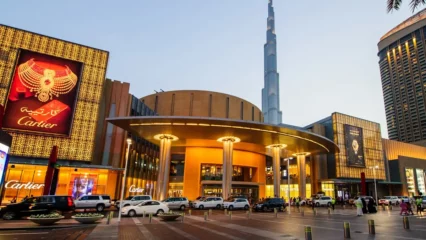 A Comprehensive Guide to Parking at Dubai Mall: Fees, Zones, and Best Entry-Exit Strategies
A Comprehensive Guide to Parking at Dubai Mall: Fees, Zones, and Best Entry-Exit Strategies
This guide provides detailed insights into Dubai Mall’s parking zones, fees, exemptions, and the best entry and exit strategies to ensure a seamless visit. Whether you’re heading for luxury shopping, a movie, or the Dubai Fountain, we’ve got you covered.
This guide provides detailed insights into Dubai Mall’s parking zones, fees, exemptions, and the best entry and exit strategies to ensure a seamless visit. Whether you’re heading for luxury shopping, a movie, or the Dubai Fountain, we’ve got you covered.
From the iconic skylines of Dubai to the cultural charm of Sharjah and the tranquil beaches of Fujairah, here’s a curated guide to the best staycation spots in the UAE for 2025, perfect for residents and visitors alike.
This article explores the range of discounts available to UAE residents by presenting their Emirates ID, covering sectors like hospitality, dining, entertainment, transportation, retail, and more, with specific examples from various emirates.


